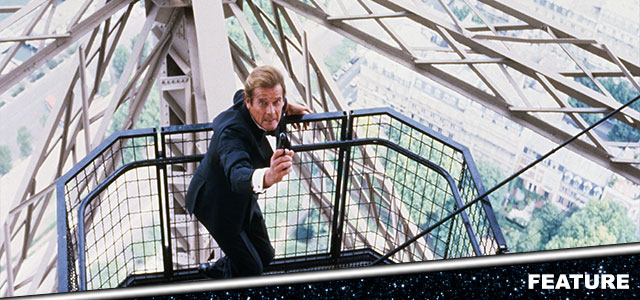
The 25th James Bond movie No Time To Die arrives in Cineworld in September, and we're counting down the days by revisiting all the 007 movies in chronological order of release.
In honour of Daniel Craig's swansong as 007, we're taking a nostalgic trip back through time. This week: Roger Moore makes his final Bond appearance in A View To A Kill...
What is the story of A View To A Kill?
On a mission in Siberia, MI6 agent James Bond/007 (Roger Moore) retrieves a Soviet Union microchip from the body of fellow agent 003. The chip has been designed by Zorin Industries, owned by prominent industrialist Max Zorin (Christopher Walken). An investigation into Zorin's apparent drugging of prize racehorses leads Bond to his arch-enemy's stud farm in Paris, and eventually to San Francisco, where Zorin's grand plan is unveiled.
With the help of his henchwoman May Day (Grace Jones), Zorin plans to flood Silicon Valley, establishing his monopoly over the world's microchip market. Bond must work together with Stacey Sutton (Tanya Roberts), who had earlier thwarted Zorin's attempts to pay her off, to thwart 'Project Mainstrike": a dastardly attempt to set off a chain reaction of explosions beneath Silicon Valley itself.
How did A View To A Kill get made?
All good things must come to an end. In 1985, actor Roger Moore bowed out of the role of James Bond, having first portrayed the character in 1973's Live and Let Die. Moore had succeeded what many thought was impossible: establish a distinct portrayal of 007 in the wake of trendsetting predecessor Sean Connery. Moore's facility with jokes and his suave charm were certainly distinct from the more rugged Connery, and had helped steer Bond throughout the more overtly comic 1970s and 1980s, although with more than a few bumps along the way. (1974's The Man With The Golden Gun is often considered the self-parodying nadir of the entire franchise.)
Moore's final movie was A View To A Kill, although the popular consensus is that he should have bowed out long before that. (He was 57 when production began.) Moore was persuaded to stay in the role for 1983's Octopussy by producer Albert R. 'Cubby' Broccoli, who wanted a familiar face to counteract the threat of rival Bond production Never Say Never Again, starring Connery. All that aside, was it really necessary for Moore to return in A View To A Kill? From the smaller details (it's clear Moore's thinning hair has been padded out) to the larger ones (more and more stuntmen were needed to stand in during the action sequences), by this stage, the character of Bond was starting to lack conviction.
Moore's gentlemanly nature was also starting to rub up against the harder-edged impulses of the period; director John Glen smuggles in more scenes of violence in A View To A Kill than the earlier films had showcased, presumably to assert Bond's relevance in the mid-eighties. After all, if 007 couldn't play with the big boys and get his hands dirty, then what future did the franchise hold? These impulses would take root even further in the Timothy Dalton era; in fact, some of the more violent scenes in A View To A Kill suggest that the franchise had already left Moore behind, even as he continued to occupy the central role. Things aren't helped by the age of Bond's fellow allies, including Lois Maxwell as Moneypenny, all of whom contribute to the creaky feel of the movie. That said, this was Maxwell's final movie as the character, and deserves to be recognised as something of a landmark in the franchise.
As with so many of the Roger Moore Bond movies, there's a queasy attempt to fuse broad comedy with nastier moments, which leaves a sour taste in the mouth. Add in a hero who was starting to resemble someone's grandfather, and it's little wonder that A View To A Kill isn't regarded with particular fondness. However, it does boast one of the all-time great Bond villains in the form of Christopher Walken's Max Zorin, a platinum-blonde psychopath who thinks nothing of feeding people into propellers, or machine-gunning his workforce.
Walken is, of course, famous for his portrayal of neurotics and oddballs, and these little quirks help transform a potentially one-dimensional character into something truly memorable. One senses that Zorin loves his status as an arch-enemy, giggling when he unleashes violence, particularly during the effective moment when he reveals the premeditated attempt to murder Stacey's boss at San Francisco City Hall. Walken's typically weird mannerisms and tonal phrases, with emphasis going on unexpected words, make Zorin a great Bond antagonist.
It is undoubtedly true, however, that Walken's youthful, exuberant villain demanded a youthful, physically intense Bond to match him. (Interestingly, the role was first offered to David Bowie, who turned it down.) And the bizarre spectacle continues with the addition of May Day, played by mercurial pop star Grace Jones. At the time, the volatile musician had become infamous for slapping TV presenter Russell Harty around the head during an interview, and Jones' unpredictable, exotic presence helps May Day stand out as a memorable enemy, even if the character is frustratingly underdeveloped. And her relationship with Moore is said to have been fractious: on more than one occasion, Moore alluded to finding Jones hard to handle. This only makes the spectacle of May Day jumping into bed with a much older Bond all the more strange. (Jones' boyfriend at the time, Dolph Lundgren, cameos as a KGB agent.)
If A View To A Kill scores with its villains, it badly lets the side down when it comes to the main female character. Previous Moore movies had done fairly well in this area, his Bond having been effectively matched with the likes of Barbara Bach (The Spy Who Loved Me), Carole Bouquet (For Your Eyes Only) and Maud Adams (Octopussy). However, Tanya Roberts' Stacey Sutton is little more than a screechy damsel in distress, who spends half of the running time begging for Bond to save her. It's another sign of how the Bond movies were, in typical periodical fashion, desiring a refresh.
The movie was adapted from Bond author Ian Fleming's short story 'From A View To A Kill' (the first word was removed during production). However, the film adaptation owes little to its source other than the title; in the original story, Bond investigates the theft of top-secret documents, running into the path of an assassin. The name Zorin, however, was derived from the real-life Zoran Corporation, which led to a disclaimer at the start of the movie (the only other Bond film to do so was The Living Daylights).
Michael G. Wilson, who by this stage had been elevated from associate producer to full producer alongside Broccoli, co-wrote the script with Bond veteran Richard Maibaum. They drew on the explosion of interest in the microchip market, a period in which advances in computer technology were dominating the pop culture landscape. (The earlier WarGames, released in 1984, is considered a cult classic in this field, centering as it does on a kid who initiates World War III via his own computer.)
Under the supervision of director Glen (by this stage, on his third Bond movie), A View To A Kill's production spanned a number of international locations. One of the key sequences involves May Day's base jump from the Eiffel Tower (accompanied in the movie by composer John Barry's booming horn bursts). In reality, two stuntmen, B.J. Worth and Don Caldvedt, were employed to perform the jump; however, Caldvedt was unhappy when the filmmakers said they had all they needed from Worth's footage. In retaliation, Caldvedt performed his own, unsupervised jump from the Paris monument, leading to him being sacked from the production.
It's, therefore, a shame that such an impressive moment is undercut by a silly car chase sequence in which Bond pursues May Day in a taxi that's promptly shorn in half. (When Bond jumps onto a boat in pursuit, listen out for a jazzy rendition of 'A View To A Kill' being performed by the onboard band.)
The Chateau D'Chantilly stood in for Zorin's lavish stud farm, where Bond and cohort Godfrey Tibbett (Patrick Macnee) make some important discoveries. In fact, the scenes shared between old friends Moore and Macnee are some of the most entertaining in the movie, particularly when Bond compels Tibbett to act as his long-suffering valet. What a shame that the movie contrives to finish Tibbett off, albeit in a well-executed (excuse the pun) sequence when he's strangled by May Day in a car wash. Meanwhile, Iceland stood in for Siberia during the pre-credits sequence, where Bond infamously escapes his enemies to the sound of The Beach Boys' 'California Girls'.
Much of the rest of the movie was shot in and around San Francisco; however, the scenes involving Zorin's mine were filmed at the Amberley Chalk Pits in East Sussex. Interior filming hit a snag when the famed '007 Stage' at Pinewood Studios, constructed for 1977's The Spy Who Loved Me, burned down during a fire; this was caused during the production of Ridley Scott's 1984 fantasy epic Legend, which was leasing the stage at the time. It was the first of several times that the stage would burn down throughout the franchise's history; however, the space re-opened in January 1985 and dubbed 'Albert R. Broccoli's 007 Stage'.
READ MORE
- No Time To Die and the 6 James Bond movies we never got to see
- 7 actors who could play James Bond after Daniel Craig retires
- Shaken and stirred! Daniel Craig's defining 007 moments
What music is on the A View To A Kill soundtrack?
For his penultimate Bond score, John Barry turned in one of his best efforts in the series. As 007 advanced further into the MTV era, Barry demonstrated his versatility as a composer, evolving the sound of Bond through carefully deployed electric guitar licks, which sit brilliantly alongside the thrilling symphony orchestra.
As with all great Bond scores, it starts with a genuinely memorable theme song. Duran Duran's title number is inescapable eighties but retains its popularity, with the synth and guitar bursts modernising Bond's character. Reportedly, the relationship between Barry and the group wasn't smooth (although the project was instigated by bassist John Taylor, a lifelong Barry fan), but it resulted in one of the most successful 007 themes of them all.
Golden Globe-nominated for Best Original Song, 'A View To A Kill' hit number two on the UK singles chart in May 1985, and in July that year, it hit number one on the US Billboard chart, to date the only Bond song to do so. The accompanying music video was partly filmed in and around the pivotal movie location of the Eiffel Tower, intercut with clips from the film itself.
The presence of a strong melody and rhythmic hook in the song allows Barry to fashion a terrific orchestral score. Somewhat oddly, the Bond theme itself is deployed sparingly, unlike its regular usage throughout Octopussy. (Its most prominent appearance in A View To A Kill comes during the Paris car chase sequence.) Instead, Barry creates an exciting new action motif that oscillates between low register horns, snare drums and piercing electric guitar, underlining the threat that Zorin poses, and Bond's desperate battle to stop him.
This classic theme weaves its way throughout the score, from the opening 'Snow Job' to the memorable finale 'Golden Gate Fight', one of the best pieces of action music in the Bond canon.
Barry is also steadfastly loyal to the song's melody throughout the underscore. The theme is treated to a number of variations, including a delicate, flute-led presentation in 'Wine With Stacey', and a thunderous, brass-laden statement in 'A View To A Kill Fanfare'. The latter accompanies the scene where Bond rescues Stacey from San Francisco's burning City Hall, asserting the heroism of the character far more overtly than he had done in the preceding scores.
As ever, Barry's penchant for stylish suspense music is unmatched. He complements the main action motif and song theme with a secondary piece for Zorin, resplendent on horns and trumpets in the grandiose manner of his earlier score for Goldfinger. This might be classed as Zorin's blimp theme, given it's most prominent when the evil industrialist is soaring over San Francisco and laying out his diabolical scheme.
Meanwhile, the low percussion, strings and brooding brass of 'Tibbett Gets Washed Out' attains a genuine sense of menace. It more than reinforces the presence of Zorin and May Day as two of the nastiest, most physically dangerous Bond villains to date.
It's a stylish and entertaining musical package that far outstrips the quality of the film for which it was written. In terms of honouring his own sound and updating it for a brand new era, Barry demonstrated he had few, if any, equals.
How was A View To A Kill received?
Despite negative reviews, A View To A Kill was yet another Roger Moore Bond movie that managed to turn a sizeable profit. Against a budget of $30 million, the movie grossed $152.4 million worldwide – a sign of how Moore had consistently kept Bond in the black amidst an era of shifting pop culture trends and other challenges.
Fuse the film's financial success with its musical chart performance, and there's no denying A View To A Kill was a hit. Critics, however, weren't impressed, citing Moore's age and the increasingly tired emphasis on comedy. This was the first Bond movie to premiere outside the UK, the event instead taking place at San Francisco's Palace of Fine Arts on the 22nd of May 1985; a later premiere in London's Leicester Square, attended by Prince Charles and Princess Diana, took place on the 12th of June.
Former Bond actor Sean Connery even described Moore as "too old" for the part. And Moore himself confessed that this was the least favourite of his own Bond films, citing problems with the increased violence. "I was horrified on the last Bond I did. Whole slews of sequences where Christopher Walken was machine-gunning hundreds of people. I said 'That wasn't Bond, those weren't Bond films.' It stopped being what they were all about. You didn't dwell on the blood and the brains spewing all over the place"
Moore also expressed his horror that the mother of the latest Bond actress was younger than he was. And the press was equally unkind. The Washington Post disparaged the movie: "Moore isn't just long in the tooth—he's got tusks, and what looks like an eye job has given him the pie-eyed blankness of a zombie. He's not believable anymore in the action sequences, even less so in the romantic scenes—it's like watching women fall all over Gabby Hayes."
Noted film critic Pauline Kael was also unimpressed: "The James Bond series has had its bummers, but nothing before in the class of A View to a Kill. You go to a Bond picture expecting some style or, at least, some flash, some lift; you don't expect the dumb police-car crashes you get here. You do see some ingenious daredevil feats, but they're crowded together and, the way they're set up, they don't give you the irresponsible, giddy tingle you're hoping for."
To this day, A View To A Kill is regularly viewed as one of the weaker Bond movies by fans and critics. It was, perhaps, not the best note for Moore to go out on; it had been expected that he would retire following 1981's For Your Eyes Only, and his age is clearly an issue in A View To A Kill. Nevertheless, the end of Moore's tenure confirmed that he had successfully re-authored the role in the wake of Connery, no mean feat, and had kept the franchise lucrative throughout two of its most challenging decades.
For that reason, Moore's light touch deserves kudos as well as criticism. For all the faults of the individual films, Moore's portrayal of the character remains enduringly popular to this day.
What was the next movie in the James Bond series?
Timothy Dalton took over as James Bond in The Living Daylights, released in 1987.
When is No Time To Die released in the UK?
No Time To Die is released on 30th September. Don't forget to tweet us your favourite James Bond movies @Cineworld.


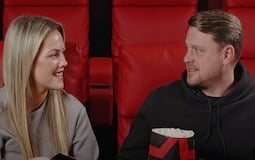
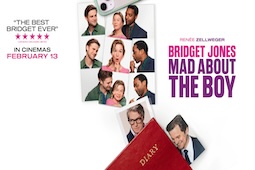
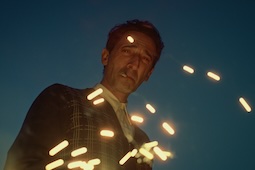
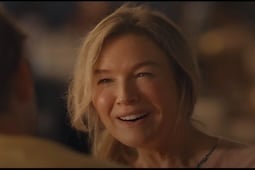
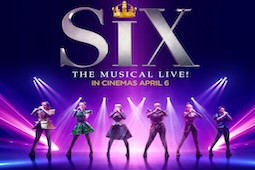
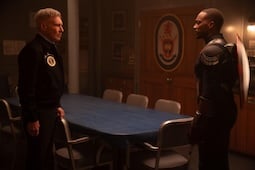

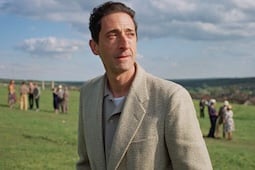
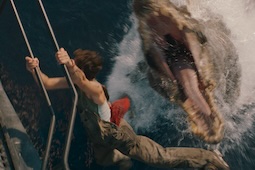




.jpg)
.png)






